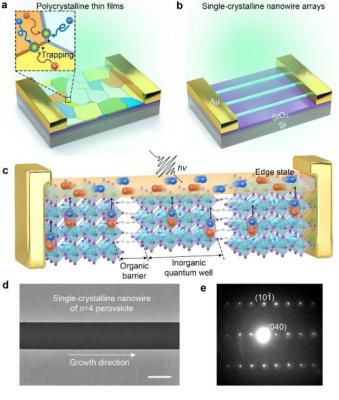Researchers at the Technical Institute of Physics and Chemistry (TIPC) in China, together with research groups at Tianjin University and the University of California, have realized the fabrication of high-quality two-dimensional perovskite nanowire arrays, which exhibit ultra-sensitive photodetection.

Through controlling the dewetting dynamics on the asymmetric-wettability topographical interface, the researchers have realized the controllable growth of single-crystalline 2D-perovskite nanowires. These nanowires are self-organized layer-by-layer into quantum wells with alternating conductive perovskite layers and insulating organic cations.
The exposed layer edges on the surfaces of nanowires can efficiently dissociate excitons from crystalline interior into free carriers, which contribute to the high photoconductivity.
Based on these single-crystalline nanowires, researchers have realized high responsivity exceeding 104 A w-1 and specific detectivity exceeding 7×1015 Jones, which reportedly represent the most sensitive perovskite photodetector to date.

